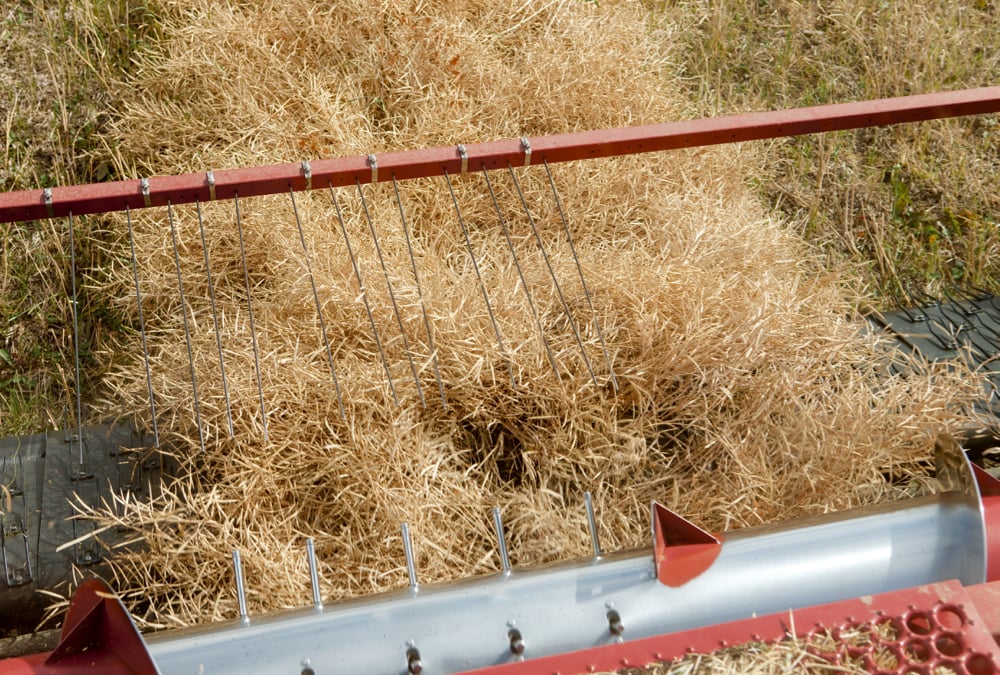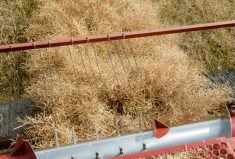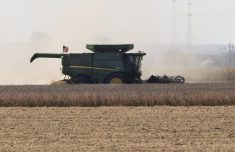WINNIPEG — A Canadian Federation of Agriculture official thinks grain graders should have to pass a standardized course before doing their jobs.
CFA vice-president Humphrey Banack said a certified training program for grain graders would assure farmers that their crops were evaluated objectively at an inland terminal.
“The guy grading my grain today might have been shoveling my (truck) box out a year ago,” Banack said at the Canada Grains Council annual meeting Winnipeg April 2.
“We (farmers) are concerned that he hasn’t taken the proper schooling or training … (and) he’s making an economic impact on my farm.”
Read Also

Alberta harvest wrapping up: report
Harvest operations advanced to 96 per cent complete in Alberta as of Oct. 7, with only a few late-seeded cereal and canola fields remaining, according to the latest provincial crop report.
Banack, who farms near Round Hill, Alta., would like the Canadian Grain Commission or another agency to standardize grain grading training instead of the current system in which grain handling companies train their own employees.
He said this doesn’t imply that company training is shoddy, but graders have the power to dock the value of grain by thousands of dollars and producers need to know they were trained by a credible third party.
“We need to see some assurance of grain grading credentials across the industry,” he said. “That some fellow on shift (at an inland terminal) is a licensed grain grader.”
Elwin Hermanson, chief commissioner of the grain commission, said U.S. grain graders must satisfy certain requirements.
“The Americans, through the FGIS (Federal Grain Inspection Service), do train grain inspectors and they have to pass a test,” he said.
“We (CGC) are open to doing that going forward. It’s not directly in our mandate, but it’s not totally out of our mandate, from the viewpoint of grain quality assurance.”
Producers who are dissatisfied with the grade at an elevator can submit a sample to the CGC. The commission will then assign a protein content or dockage to the sample, which settles the matter.
Brenda Tjaden-Lepp, co-founder of Farm Link Marketing Solutions, said producers are reluctant to use the appeals process because it may jeopardize a farmer’s relationship with a grain buyer.
“If you (the CGC) are not getting a lot of people asking for re-checks … it’s because (farmers) know if they submit it, they’re never going to get a premium or grain upgrade from that (buyer) again,” she told the grains council meeting.
“That’s a regularly reported issue from the growers we work with.”
Doug Robertson, president of the Western Barley Growers Association, said technology should be used to mitigate the human element and subjective nature of grading.
For example, he said grain companies could use a machine to evaluate the chlorophyll content of canola instead of visually assessing green seeds in a sample.
“But what is light green and what’s dark green? You’ve got anywhere from John Deere green to Deutz green to Cat yellow” Banack said.
“In a year when we’re running anywhere from five to 10 percent green, there can be a lot of discounts on that (canola)…. Even if it doesn’t exist, let’s continue to look for ways to explore the technology. The whole grain industry can benefit by knowing what we take in at the pit is matching what we need at the coast.”
The grain commission’s Western Standards Committee is evaluating the potential of near-infrared reflectance spectroscopy to measure chlorophyll content of canola. The committee is planning to release its findings this spring.

















